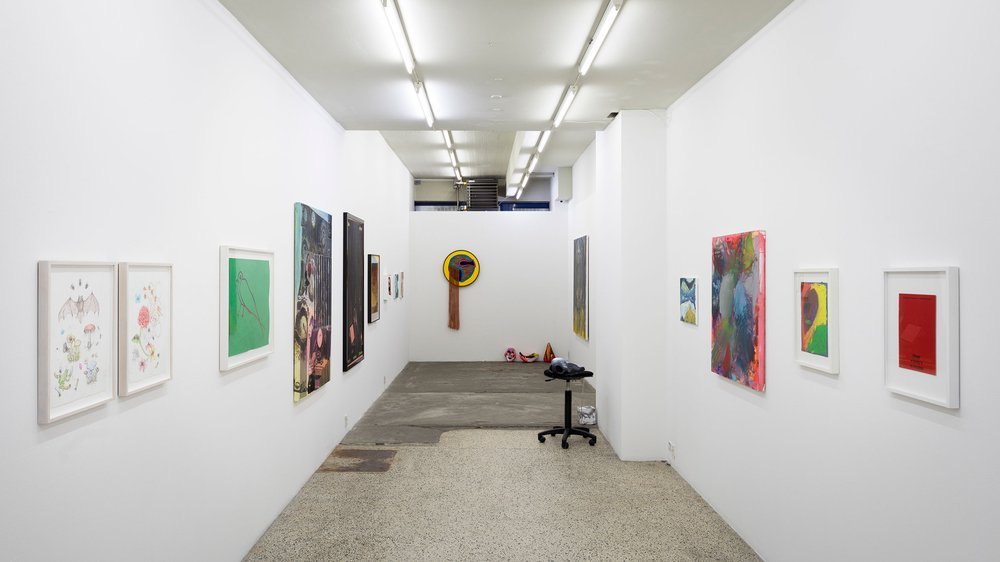Sausage, machines, and views on consumption.
*Archive Article: Originally published in the magazine Blacklisted Copenhagen on January 31, 2018
Web: studiojephrim.com
I will come right out and say it. I’m not a fan of sausage…or hot dogs, or pølse, or whatever you want to call phallic tubes of mystery meat. They were fantastic when I was a child, but once I reached the age to comprehend how they were made, I was out. I’m not an animal rights activist. I’m not vegan or vegetarian. I just find them quite gross conceptually.
The one thing that I will give the sausage, though, is its value for comic relief. When viewed as an object, and not a foul source of nutrients, they are absurdly hilarious. So when I first saw the newest work of artist Stefanie Ritter ‘Made in Germany’ my first response was to chuckle.
Imagine two conveyor belt machines, with a single sausage flopping around on the course shared between them. It was like some morbidly satirical perpetual motion machine, powered by its own ridiculousness.
Upon digging a little deeper, there is way more to this work than to garner a few laughs at the weirdness of it all. The work is a commentary on human consumption and how we have taken captive and transformed living beings and appropriated them into consumables that allow us to maintain a sense of apathy to the horror of these actions. No blood, no screams, just meat tubes.
As I said, I am not an animal rights activist, but I will admit that eating a steak bought in a supermarket is decidedly more palatable than if I were to slice a chunk of flesh off the backside of a cow.
This is where Stephanie Ritter’s work begins to make you think, or at least recognize the source of this seemingly innocuous meat tube. It was part of life before, or many lives stripped down to essentially biomass for our consumption.
This is what I enjoy about the work. There is a darkness, a serious issue, underneath the immediate humor. It takes you by surprise, because you are drawn in by the silliness, but left to take stock of your own role in the cultural mass assimilation of other living beings in order to mass-produce something as mundane as a sausage.
INTERVIEW
Looking through your oeuvre of work, it becomes apparent that you like to explore atypical objects in your work – a sausage being a perfect example of this. During your process, is it the concept that dictates the objects that you work with, or do the objects which you encounter spark conceptual ideas?
I guess it’s a bit a mixture of both. I have tons of ideas and thoughts in my mind, which all want to come together. I’m wandering through the world with open eyes and soak in everything I can get. I’m really fascinated by nature and all its fullness.
I see beauty in almost everything. Could be color, materiality, texture, or even just the story. I also like the awkwardness of objects, persons or situations. The more awkward and special the better. I like falling out situations, which make you think twice. I like to think outside the box and think the stream different and try not to accept everything. This brings me to ask questions. Since my childhood, I’m asking unpleasant questions.
So striving through flea markets or while traveling or even just while walking around I see objects, situations which talk to me. But also the other way around I have quite an idea about values, and our treatment with our world, so similar thoughts are always in my mind, which want to come together.
This work, Made in Germany – as well as your previous work Peepshow – explored your social views on animal treatment. Can you tell me about that?
I’m fascinated by the beauty and diversity of our complex world. But again and again, I come to the point where I’m faced with the reality that lots of things in our world are not running well. Mostly it’s about consumption, needs, and the luxury of the ‘human being’ which takes without giving it back or thinking twice about what is needed. Also in our food and animal production.
We are blind, consuming products made from animals or our nature. But while consuming, we are closing our eyes to the harsh reality.
We don’t want to know the cruel reality behind the curtain. Instead, we watch the absurd beauty of advertisements, or how our world is supposed to be.
It’s not about consuming meat or consuming in general. It’s about how we consume, without thinking – consuming in a quite egoistic way. We don’t question why and how things happen, but more just accept how everything is served. Of course, it’s the easiest way to survive and go with the flow. We should change our behavior – stop taking things for granted…
On that note, can you tell me a little more about this new work, Made in Germany?
Helene Bosecker:The paradoxes of industrial meat production are mostly hidden behind an excessively clean skin and a perfect shape. Especially in Germany, the sausage is a characteristic dish that somehow achieved to be a cultural identity – with all dilemmatic aspects of its being. Jan Bernstein and my work explore another level of visibility.
Within the sterile construction of two conveyor belts which form a circle through their tended parallel position, the viewer sees the environment of meat production. The final shape is already given. The former animal as a living being transformed by German standards of expected appearance.
But perfection in production finds its end of economic growth in a bizarre and valueless superfetation. The results are amoral treatments of animals, brutal methods of slaughter to finally produce a sausage that doesn’t tell that story of its becoming and nobody needs.
We surprise the viewer by hiding this exposure of human soullessness behind a clean and perfect running system, adding a humorous component which is one the one hand a welcoming opener to the difficult topic, on the other a shameless finger pointing at all of our responsibility in consumption.
So the well-shaped sausage-smelling product moves from one to the other treadmill and makes a hilarious noise by flopping on the white surface and goes around and goes around in circles until something changes.
Through the social commentary that you use to inject into your work, there is sometimes also a certain level of satire, or rather absurd humor, to some of your work. What is your opinion on using humor in art to express heavy subject matter?
I guess it lies in my character.I’m a quite silly person. I don’t take life too seriously. I’m serious about how to handle situations and values, but I feel its often more natural with a certain amount of humor.
Through humor, we can explain things easier, without pointing the finger at somebody. It’s about criticism dropped through a hint. Humor can destabilize a situation and, in a split second, draw the viewer in or allow something else out.









